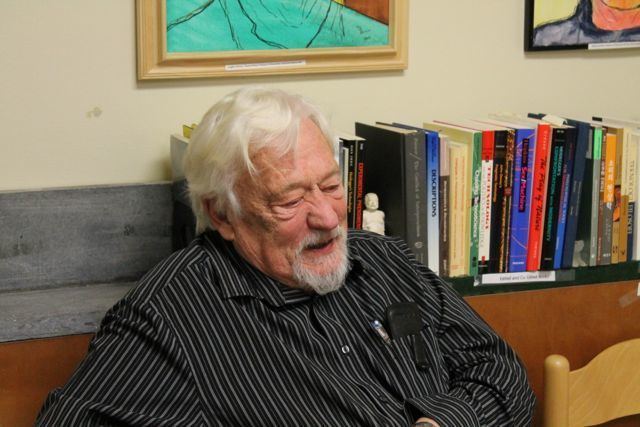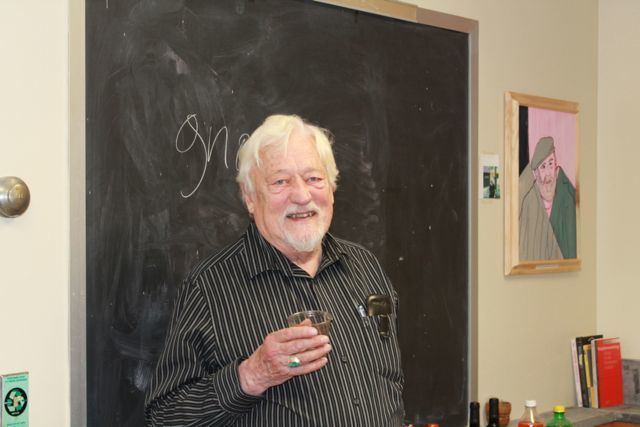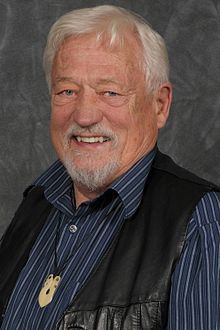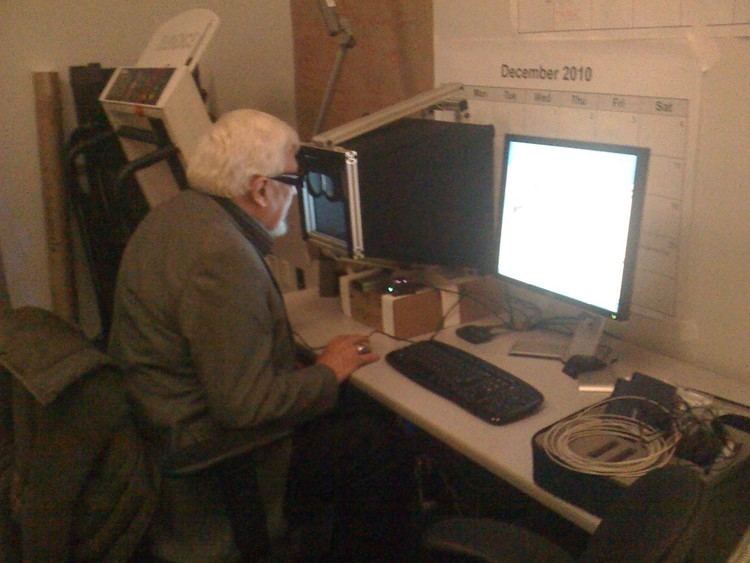Name Don Ihde Region Western philosophy | Influenced Lucas Introna Role Philosopher | |
 | ||
Schools of thought Phenomenology, Hermeneutics Books Postphenomenology, Bodies in Technology, Technology and the lifeworld, Listening and Voice, Experimental Phenomenology | ||
Don ihde postphenomenology embodiment and transhumanism
Don Ihde (; born 1934) is an American philosopher of science and technology, and a postphenomenologist. In 1979 he wrote what is often identified as the first North American work on philosophy of technology, Technics and Praxis. Ihde is Distinguished Professor of Philosophy at the State University of New York at Stony Brook. In 2013 Ihde received the Golden Eurydice Award. Ihde is the author of twenty-two original books and the editor of many others. Recent examples include Acoustic Technics (2015); Husserl's Missing Technologies (2016); Embodied Technics (2010); Heidegger's Technologies: Postphenomenological Perspectives (2010); Postphenomenology and Technoscience (Chinese 2008/English 2009) also in Spanish, Hebrew and forthcoming Portuguese; Chasing Technoscience (2003), edited with Evan Selinger; Bodies in Technology (2001); Expanding Hermeneutics: Visualism in Science (1998); and Postphenomenology (1993). Ihde lectures and gives seminars internationally and some of his books and articles have appeared in a dozen languages.
Contents
- Don ihde postphenomenology embodiment and transhumanism
- Pcg2012 don ihde game bodies
- Bodies in cyberspace
- Technoscience Research Seminar
- Expanding hermeneutics
- Material hermeneutics
- Philosophers in the RD position
- Books
- Articles
- References

Pcg2012 don ihde game bodies
Bodies in cyberspace

Ihde's Bodies in Technology spells out the original exploration of the ways cyberspace affects the human experience. The book is useful to the research scholars who are exploring the role of bodies in the VR technologies. The book is the study of embodiment in cyberspace, an ideal book also related to human–computer interaction (HCI); Ihde explores the meaning of bodies in technology.

Don Ihde entirely rejects Cartesian dualism and Ihde further "does not believe we human beings can exist in disembodied form." Even to have an out of body experience is to have an implicit 'here-body' from which we experience an 'object-body' over there. Ihde believes in having 'I am my body.' But its outlines are ambiguous and 'my experience' can reach through other spatialitities. Don Ihde has further explored these arguments in his book Bodies in Technology
Beginning with a "phenomenology of multistability" in the way various "technological media" are perceived, Don Ihde examines the "roles of human embodiment, perception, and spatial transformations within communication and information media."
Ihde (2006) argues that movies like the Matrix trilogy play upon fantasy in a technological context and relate to the human sense of embodiment. Ihde points out to an important fact that we have to experience the embodiment where we live, rather than to "plugin" to a technofantasies world.
Technoscience Research Seminar
Ihde is the Director of the Technoscience Research Group in the Philosophy Department. The study of technoscience examines cutting-edge work in the fields of the philosophies of science and technology, and science studies; it also emphasizes the roles of our material cultures and expertise.
Ihde directs the graduate and post-graduate Technoscience research seminar, which reads only living authors such as Donna Haraway, Bruno Latour, Ian Hacking, Andrew Pickering, Sandra Harding. Ihde has on occasion invited other authors to the seminar for a "roast". Past roastees have included Peter Galison, Hubert Dreyfus, Albert Borgmann, Andrew Feenberg, and Harry Collins.
The seminar on technoscience has resulted in a number of publications related to its activities, and participants regularly present research results at major international conferences (Aarhus, Denmark; Vienna, Austria; CERN, Switzerland, etc.).
In a paper "Was Heidegger prescient concerning Technoscience?", Ihde re-examines Martin Heidegger's philosophy of science with a reappraisal of what was innovative, and what remained archaic. Heidegger then is read against the background of the "new" approaches to science in science studies, and against the background of the scientific revolutions which have occurred since the mid-20th century.
Expanding hermeneutics
On the issues of Hermeneutics from the Phenomenological Perspective Ihde examines what might he called a "material hermeneutics," which characterizes much practice within the domains of technoscience. Ihde rejects the vestigial Diltheyan division between the humanistic and natural sciences and argues that certain types of critical interpretation, broadly hermeneutic, characterize both sets of disciplines. Ihde examines what he calls a style of interpretation based in material practices relating to imaging technologies which have given rise to the visual hermeneutics in technoscience studies. Veszprém, 1993, it was at that meeting that Ihde first proposed the notion of Expanding hermeneutics.
Material hermeneutics
Abstract of Ihde's Sheffield paper on Material Hermeneutics, 2006:
A material hermeneutics is a hermeneutics which "gives things voices where there had been silence, and brings to sight that which was invisible." Such a hermeneutics in natural science can best be illustrated by its imaging practices. The objects of this visual hermeneutics were not texts nor linguistic phenomena, but things which came into vision through instrumental magnifications, allowing perception to go where it had not gone before. One could also say that a visual hermeneutics is a perceptual hermeneutics with a perception which while including texts, goes beyond texts. This local history gives but a small glimpse of the directions Ihde tried to outline in Expanding Hermeneutics. Such material hermeneutics are doubly material—first, in the sense that the objects being investigated are material entities—paramecia, extra-geocentric satellites, and eventually even the chemical make-up of the stars—but also it is material in the sense that the instruments being used to 'bring close' such phenomena are also material entities, technologies, by which and through which the natural sciences are embodied.In Expanding Hermeneutics I outlined both a weak program of hermeneutics in natural science, that is, a program of actual and extant practices which can best be understood as hermeneutic practices, and a strong program which was more prescriptive, suggesting ways to radicalize a material hermeneutics. In part the trajectory of expanding hermeneutics comes from much that I have learned from the new versions of interdisciplinary "science studies," which include the strands of the new sociologies of science, feminist critiques of science, and the varieties of philosophy of science which emphasize praxis, instruments, and laboratories over sheer theory production, all under which he now title "technoscience studies." I developed a sensitivity to the ways in which our instruments, technologies operate in hermeneutic ways.Philosophers in the 'R&D' position
Don Ihde has argued on numerous occasions that "if the philosopher is to play a more important role it must not be only in or limited to the 'Hemingway role'. Rather, it should take place in the equivalent of the officers' strategy meeting, before the battle takes shape. I will call this the 'R&D role'" (Ihde, 1999, p. 46). Philosophers should engage themselves on "interdisciplinary research teams and play precisely ‘R&D’ roles" (p. 49). Over the years Don Ihde has been pleading that philosophers should be in the 'R&D' position. The philosophers of technology "should reposition themselves" in the "R&D" position where "technologies are taking developmental shape, in think tanks, in incubator facilities, in research centers. Only then can truly "new" and emerging technologies be philosophically engaged" (Ihde, 2012, p. 332). "Philosophers, postphenomenologists, in R&D positions could conceivable bring to bear thinking on future, rather than past or actually in-place phenomena" argues Don Ihde (2003, p. 7).
